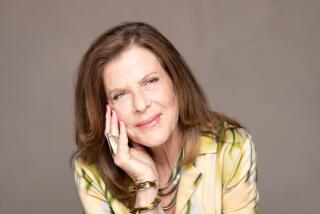Architect Shigeru Ban, known for disaster relief, wins Pritzker Prize
For the third time in five years, the Pritzker Prize is going to a Japanese architect.
Shigeru Ban, a 56-year-old architect born in Tokyo, was named the winner of his profession’s top honor on Monday.
Yet Ban’s architecture is markedly different, in form and sensibility, from the work of recent Pritzker winners from Japan. He’s best known for quickly assembled buildings, many made of cardboard or shipping containers, designed for parts of the world reeling from war or natural disaster.
His belief in architecture as a political and humanitarian art as much as an aesthetic one separates his work from the sleek, precisely wrought high-tech buildings by last year’s Pritzker winner, Toyo Ito, and the white-on-white, nearly weightless minimalism of Kazuyo Sejima and Ryue Nishizawa, the 2010 honorees.
PHOTOS: Hawthorne’s best architecture moments of 2013
Ban traveled to Rwanda after the 1994 civil war and designed inexpensive shelters for the United Nations. After the 1995 earthquake in Kobe, Japan, he produced temporary housing and a church using cardboard tubes coated to protect against fire and weather.
In recent years Ban and architects affiliated with his Voluntary Architects’ Network have designed buildings for tsunami and earthquake victims near Fukushima, Japan, and for quake-damaged towns in New Zealand, China, Italy and Turkey.
Ban also works for private clients. He has designed several houses, an outpost of the Centre Pompidou in Metz, France (in collaboration with Jean de Gastines and Philip Gumuchdjian), and a new $45-million building for the Aspen Art Museum, set to open in August.
What unites the work, along with a keen interest in the relationship between materials and structural engineering, is a certain frankness, even primitivism. His buildings are eager to make clear how they’re put together.
In its citation, the eight-member Pritzker jury, which this year included architects Alejandro Aravena, Yung Ho Chang and Glenn Murcutt as well as Supreme Court Justice Stephen Breyer, praised Ban for the “elegant simplicity and apparent effortlessness of his works” and for “responding with creativity and high-quality design to extreme situations caused by devastating natural disasters.”
PHOTOS: Arts and culture in pictures by The Times
In a phone interview, Ban said architects are typically “too busy working for the privileged. Historically, it’s been the same. The privileged people have money and power, which are invisible, so they hire us to make their power and money visible through monumental architecture.”
He added: “The important thing for me is balance, working on normal buildings and also in disaster areas.”
Speaking of balance, Ban’s Pritzker is a clear attempt by the jury to address the longstanding (and recently deepening) rift between architecture’s humanitarian and high-design wings.
On one side are those who practice an architecture of engagement, who use their work to address social, political or environmental crises. On the other are architects who express their ambition through form-making and innovative use of materials or technology, who work with an eye toward how a building will look in a magazine spread.
There aren’t many architects who try to bridge the divide. The Los Angeles architect Michael Maltzan is one. Colombia’s Giancarlo Mazzanti is another. Ban is a third.
CRITICS’ PICKS: What to watch, where to go, what to eat
Others seem determined to widen it. Zaha Hadid, who won a Pritzker in 2004 for her strikingly fluid, digitally designed buildings, told the Guardian newspaper last month that it was not her “duty as an architect” to address the safety of migrant construction workers in Qatar, where she designed a stadium for the 2022 World Cup. The paper reported that more than 500 Indian workers have died in Qatar since 2012.
Patrik Schumacher, a partner in Hadid’s London-based firm, then fanned the flames by declaring, in a Facebook post, that it was foolish to expect architects to concern themselves with “the delivery of social justice.” He also complained that critics and prize juries were in the grip of “misguided political correctness.”
I can only imagine how he’ll react to the news that Ban has won the Pritzker.
I have seen a wide variety of Ban’s work, including residential projects; the Pompidou Metz; his Nomadic Museum, a building made of shipping containers that opened in New York in 2005 before being reassembled at the Santa Monica Pier; and disaster-relief projects in Japan.
The experience has left me with a nagging sense that the gap the Pritzker jury wants to close may be bigger than it realizes.
PHOTOS: The most fascinating arts stories of 2013
Ban’s paper chapels and temporary apartments bring a remarkable sense of dignity to neighborhoods struggling to recover from upheaval. But his houses and museum projects are often faintly disappointing: what comes across as nimble, even ingenious problem-solving or detailing in the humanitarian projects can be merely crude in a building with a longer lead time and a higher budget.
And sometimes Ban’s response, when the projects get really large, is to double down on the crudeness, as if he is determined to hold tight to his low-budget bona fides. This effort is reminiscent of -- but in Ban’s case not nearly as effective as -- an approach that Frank Gehry has frequently used.
The Pompidou Metz, which opened in 2010 and covers more than 100,000 square feet of interior space, also suggests that the sense of grace evident in Ban’s smaller projects doesn’t always survive a leap in scale. The design for the Aspen Art Museum, at 33,000 square feet, appears more confidently resolved.
Ban, whose firm has offices in Tokyo, Paris and New York and served on the Pritzker jury from 2006 to 2009, studied at the Southern California Institute of Architecture in the late 1970s, when it was based in Santa Monica. In 1980 he enrolled at New York’s Cooper Union, where his teachers included Peter Eisenman, John Hejduk and Ricardo Scofidio.
He is familiar, in other words, with two very different kinds of paper architecture: the densely theoretical work that is destined never to be built -- but exalted at Cooper Union -- and his own relief shelters and makeshift cathedrals made of cardboard tubes.
In his commitment to humanitarian design, Ban is a figure with obvious appeal for a prize that has faced rising criticism in recent years. The Pritzker, founded in 1979 by members of the family that started the Hyatt hotel chain, has typically honored well-known architects who work for wealthy and powerful clients. Its winners have included 35 men and two women.
Last year two students at Harvard’s Graduate School of Design, Arielle Assouline-Lichten and Caroline James, circulated an online petition asking the Pritzker to retroactively honor the architect Denise Scott Brown, who was overlooked when her husband and longtime professional partner, Robert Venturi, won the award in 1991. It has been signed by more than 19,000 people, including Venturi and several other Pritzker winners.
In response, Pritzker Chairman Peter Palumbo issued a statement last June saying Venturi would remain the sole winner of the 1991 prize. “A later jury cannot re-open, or second guess the work of an earlier jury, and none has ever done so,” he wrote.
PHOTOS: Arts and culture in pictures by The Times
If honoring Ban obviously does nothing to address the Pritzker’s wide gender gap, it implicitly responds to the charge that the award has often celebrated architects serving the 1%.
“His buildings provide shelter, community centers, and spiritual places for those who have suffered tremendous loss and destruction,” the jury noted.
It also praised his 1995 Curtain Wall house in Tokyo, a dramatic exploration of the line between public and private space -- and between modesty and display -- that features two-story-high white curtains that can be pulled back to open the house to public view.
Alongside architects Rafael Vinoly and Frederic Schwartz, Ban and his New York-based partner, Dean Maltz, were members of a team of architects in a high-profile 2002 competition to produce a master plan for rebuilding the World Trade Center site. Ban’s group, known as THINK, proposed a pair of open latticed towers in place of the destroyed skyscrapers, ultimately taking second place to Daniel Libeskind.
Ban said his two biggest inspirations were Hejduk, the architecture dean at Cooper Union while he was a student there, and the German architect and engineer Frei Otto. Ban and Otto collaborated on the Japanese Pavilion for the 2000 World Expo in Hanover, Germany.
CHEAT SHEET: Spring arts preview 2014
Another forebear is the American Samuel Mockbee, who co-founded Auburn University’s influential Rural Studio in 1993 and died in 2001. Mockbee created a program that continues to bring Auburn architecture students to work in Alabama’s impoverished Hale County, where they design and build projects with inexpensive or recycled materials that both help local residents and look sharp in a photograph.
Yet unlike Mockbee, whose work was rooted in the Southern vernacular, Ban is a nomadic figure. He and other humanitarian architects are sometimes accused of parachuting after natural disasters into regions they know little about.
Still, residents in the places he works often admire and come to love his architecture. Last year Ban finished a “cardboard cathedral,” made of shipping containers topped by large paper tubes, for Christchurch, New Zealand, a city heavily damaged by a 2011 earthquake. It was supposed to be temporary, but it has become a recognizable landmark. Ban’s Pritzker win seems likely to guarantee the building a long life.
Ban said that his time in Southern California, as a SCI-Arc student, had given him some surprising insights about the residential architecture of the country he’d left behind.
“Architects like Schindler, Neutra, Craig Ellwood -- I went to see many of their buildings,” he said. “I found many Japanese influences, like connecting inside and outside and using lightweight materials. And this became, indirectly, a Japanese influence on my architecture.”
More to Read
The biggest entertainment stories
Get our big stories about Hollywood, film, television, music, arts, culture and more right in your inbox as soon as they publish.
You may occasionally receive promotional content from the Los Angeles Times.











